¿Quiere este caso práctico en pdf?
Descárguelo en English🇬🇧 y Spanish🇪🇸 directamente en su bandeja de entrada.
Descargar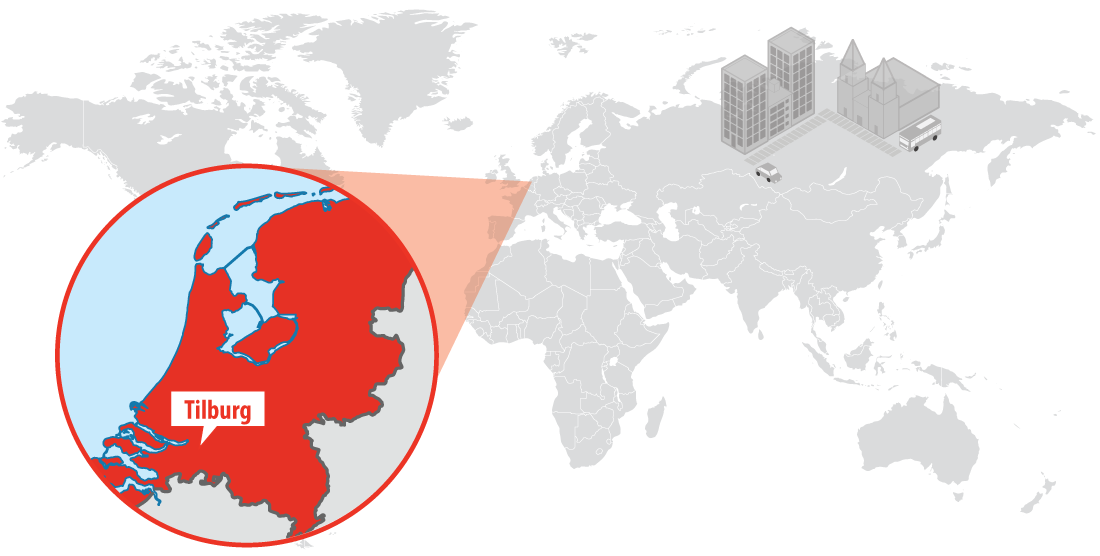
Ubicación del proyecto
Ericsson, líder mundial en el suministro de soluciones TIC, ofrece capacidades IoT únicas, desde conectividad líder en el mundo hasta aplicaciones IoT industriales galardonadas. La empresa se ha asociado con Libelium para desplegar una completa red de sensores inalámbricos para medir distintos parámetros relacionados con la calidad del aire y del agua como la temperatura, la humedad y la presión, Dióxido de carbono (CO2) Dióxido nítrico (NO2), Ozono (O3) y Partículas (PM 1, PM 2,5, PM 10). En cuanto a la calidad del agua, el proyecto incluye sondas de pH y conductividad. Aparte de estos datos, el sonido y niveles de ultrasonidosel número de También se pueden medir dispositivos Bluetooth y WiFi durante acontecimientos especiales en una zona especialmente concurrida del Piushaven.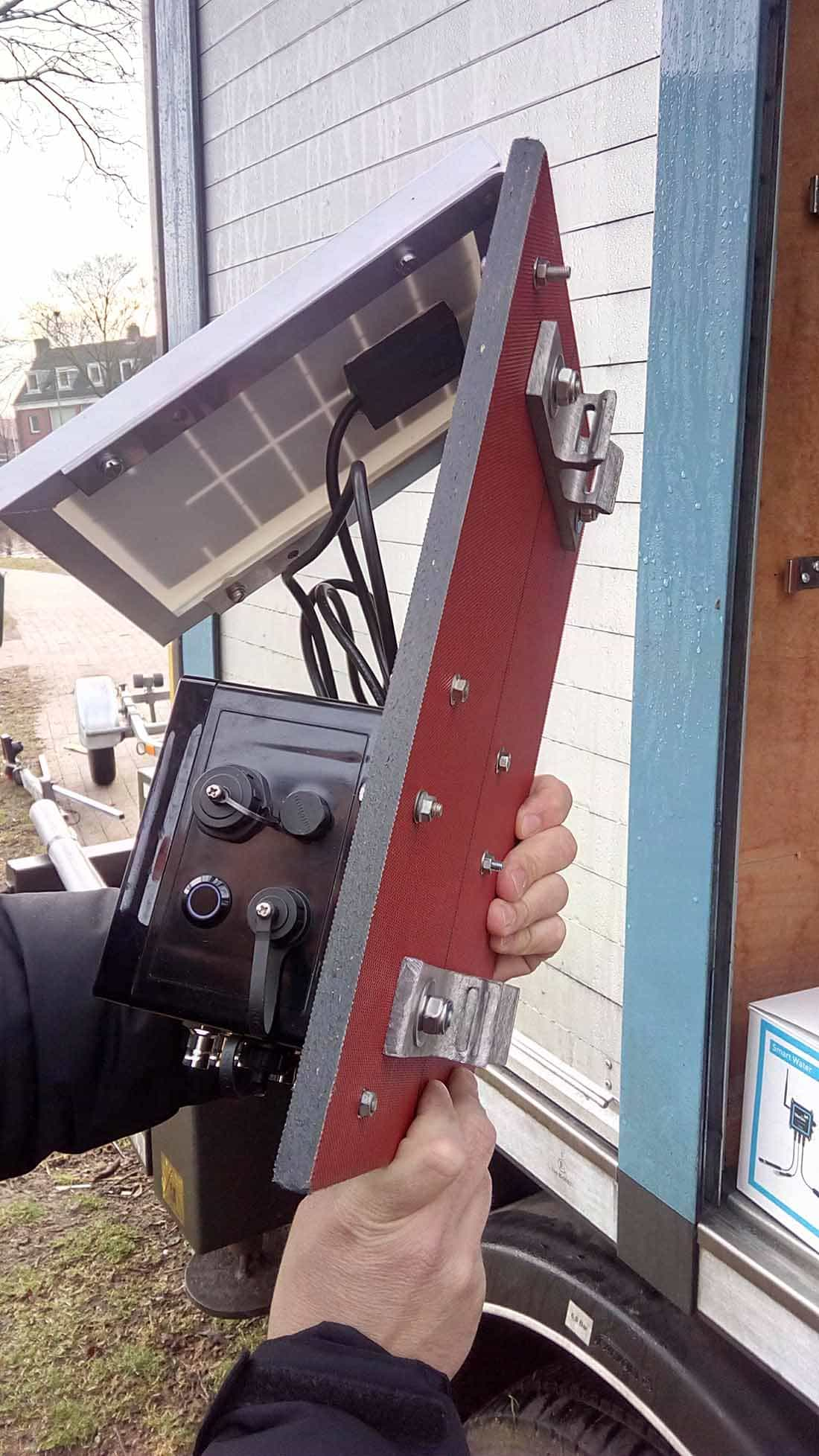
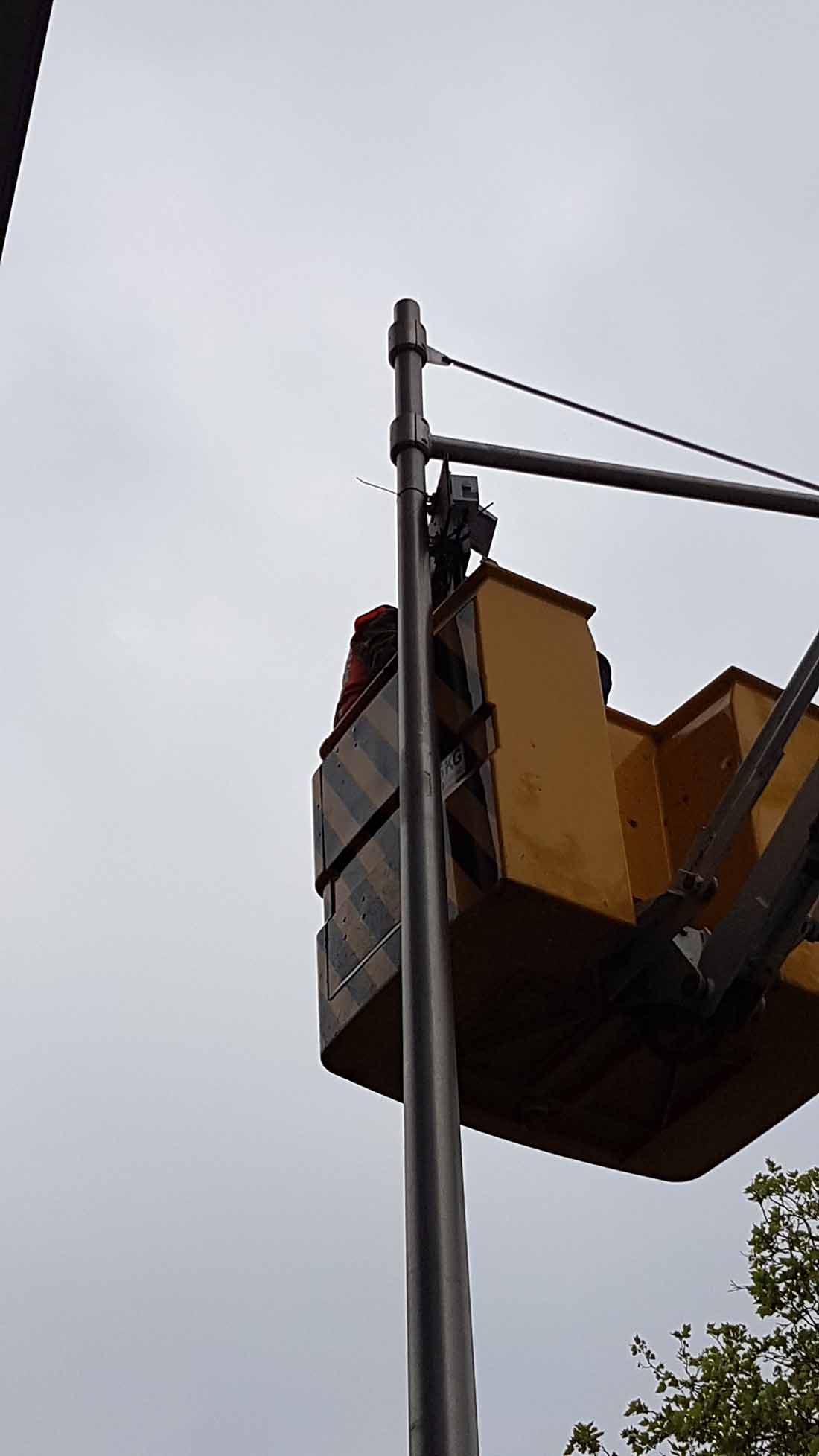
Proceso de instalación de los dispositivos Libelium
Sensores de nivel de aire, agua y ruido
Red de sensores Libelium que se ha desplegado en Piushaven se compone de cinco Waspmote Plug & Sense! Dispositivos de entorno inteligenteuno de ellos para medir la temperatura, la humedad y la presión, y otros tres sensores para medir el dióxido de carbono (CO2), dióxido nítrico (NO2), Ozono (O3) y otro más, un sensor de polvo, para medir la materia particulada. En relación con medición de la calidad del aguala red incluye dos Waspmote Plug & Sense! Sensores de agua inteligentes. Uno de ellos recogerá información sobre el pH del agua y el otro sobre la conductividad. En este caso, se incluyen tres kits de calibración diferentes.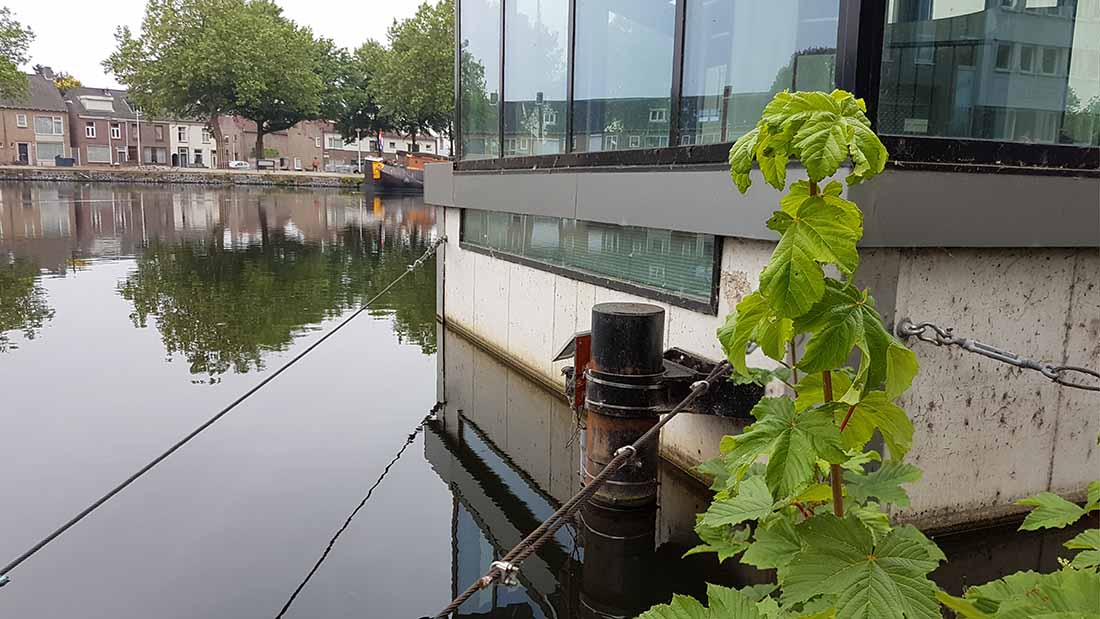
El pH y la conductividad del agua son los parámetros que deben medirse
Para medir niveles sonorosdos Waspmote Plug & Sense! Sensores Smart City se instalaron. Uno de ellos consiste en un micrófono y el otro es una sonda de ultrasonidos. Libelium Sensor de nivel de ruido mide el parámetro LAeq (Nivel sonoro continuo equivalente, con ponderación de tipo A), en unidades dBA. El LAeq es el parámetro más utilizado en las mediciones de ruido. En la actualidad, la mayoría de los países lo utilizan como métrica de elección para medir la exposición de los trabajadores al ruido, ya que no existe una constante temporal y se correlaciona razonablemente bien con el efecto del riesgo de lesión auditiva. Es práctica común medir los niveles de ruido utilizando el ajuste de ponderación A incorporado en todos los sonómetros. Todos los sensores están equipados con una batería recargable de 6.600 mAh que funciona con energía solar proporcionada por un panel solar de 7 V que proporciona una corriente máxima de 500 mA. Una pasarela Meshlium, el Meshlium Scanner 802.15.4-PRO-AP completa los elementos de red para detectar la dirección MAC de smartphones, manos libres y coches escaneando señales WiFi.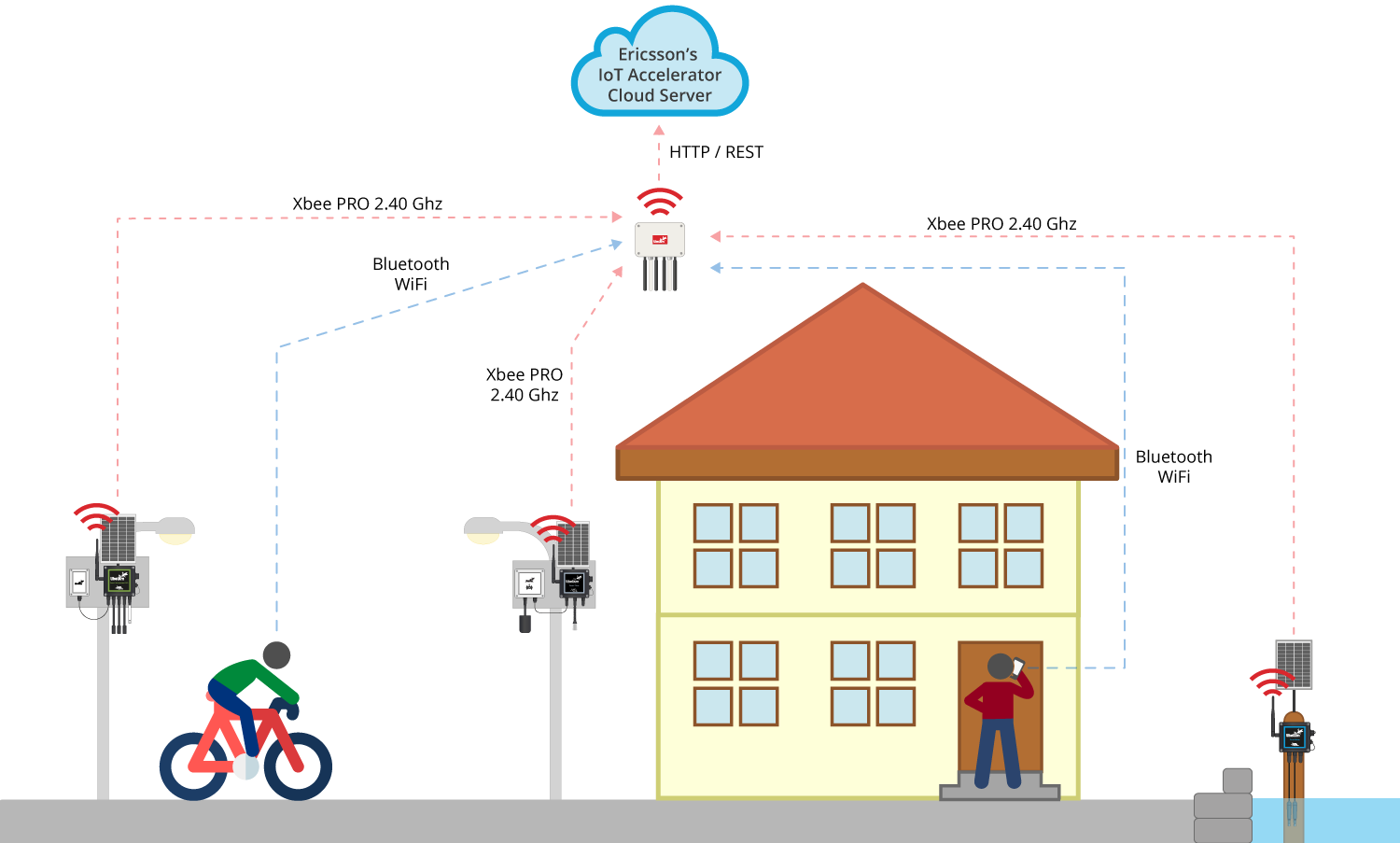
Diagrama de la red de Tilburg
La la comunicación entre los distintos elementos de la red se realiza según distintos protocolos. La comunicación entre los dispositivos y la pasarela IoT se realiza mediante un XBee-PRO que trabaja en la banda de 2,4 GHz. Entre la pasarela y la nube, la comunicación para descargar datos periódicamente pasa por la conexión Wi-Fi y Ethernet a la base de datos local. Todos los datos recogidos se analizan en la nube utilizando La plataforma IoT Accelerator de Ericsson y visualizada a través de un cuadro de mandos hecho a medida de las necesidades del cliente.. De hecho, el principal requisito es comprobar el estado medioambiental de las normas del agua, la calidad del aire y los niveles sonoros medidos para visualizarlos en un sitio web público. El objetivo del proyecto es proporcionar una plataforma abierta en la que se pueda controlar la calidad medioambiental de la ciudad. Mediante herramientas analíticas, la plataforma IoT Accelerator de Ericsson combina todos los datos medidos para que puedan revelarse nuevas perspectivas. El objetivo final es disponer de un sistema predictivo que prevea los movimientos de personas que pasan por la zona (a pie, en bicicleta o en coche) en función, por ejemplo, de las condiciones meteorológicas e indique qué impacto producirá en los niveles sonoros de la zona. Además, como en la ciudad se celebran muchos eventos en y sobre el agua, el sistema también proporciona una monitorización continua de la calidad del agua para aportar más información de cara a esos eventos (como las carreras de clavados, natación y remo).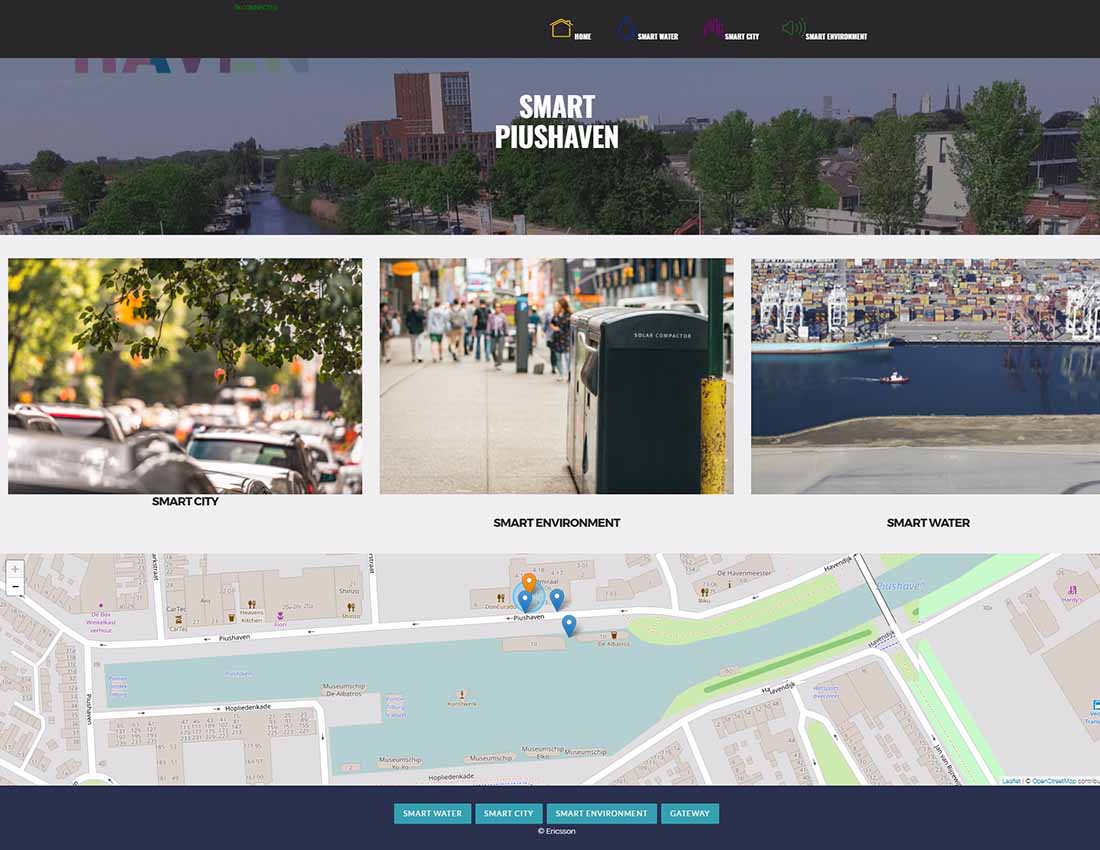
Captura de pantalla del panel de control
Aunque la comprobación periódica de la calidad del aire y del agua es importante para los ciudadanos, el punto clave de este proyecto es control del nivel sonoroque puede utilizarse cumplir los umbrales legales. Cuando se reciben quejas, el Ayuntamiento puede echar un vistazo a los niveles sonoros reales en lugar de tener que desplazarse para medirlos. Aquí es donde reside la parte más notable del retorno de la inversión, así como cuando se recopilan grandes cantidades de datos y pueden correlacionarse entre sí.Rapidez para encontrar soluciones
La ciudad de Tilburg se beneficia de los datos de los sensores de dos formas distintas: los ciudadanos y visitantes pueden disfrutar de un entorno limpio y saludable y el gobierno de Tilburg proporciona acceso a datos en tiempo real sobre la calidad del aire y el agua para demostrar el compromiso con sus ciudadanos. "Quienes viven en el barrio de Piushaven pueden mantenerse informados sobre las condiciones de vida a través del Smart Tilburg Dashboard. Además, Tilburg utiliza los datos recogidos de los sensores para crear eficiencias en su forma de trabajar. Los técnicos de Tilburg ya no tienen que desplazarse a este barrio para analizar la calidad del agua y del aire o la contaminación acústica. Cuando llegan quejas, el Ayuntamiento de Tilburg puede comprobar los niveles de sonido en tiempo real en el panel de control y, con estos datos a su alcance, también puede reducir los retrasos en el tiempo de respuesta", afirma Mark Damen, conductor de Innovación e IoT de Ericsson. "La rapidez en encontrar soluciones y en resolver cuestiones técnicas de la forma más satisfactoria para satisfacer las necesidades de los clientes son las razones más importantes para la elección de Libelium como socio", según el ingeniero y explorador de Ericsson, Sergio Abreu. Si desea más información sobre nuestros productos, póngase en contacto con el Departamento de ventas de Libelium. Si desea descargar el artículo en español, por favor pulse aquí.Más información:
Referencias:
Descárguelo en English🇬🇧 y Spanish🇪🇸 directamente en su bandeja de entrada.
Descargar*TÉRMINOS Y CONDICIONES PARA UTILIZAR EL CONTENIDO DE LIBELIUM. Libelium es el propietario de todas las imágenes proporcionadas en el sitio web y sólo pueden utilizarse citando la fuente. Cualquier vídeo, fotografía, diagrama, infografía o logotipo no puede ser utilizado o transformado sin la autorización de Libelium. Puede solicitar los archivos en alta resolución para publicarlos en su web o insertarlos en folletos de marketing siempre utilizando el logo de Libelium y enlazando con la web de Libelium. Si va a publicar el artículo en una web o medio de comunicación o en un libro blanco o estudio de investigación, deberá hacerlo incluyendo todas las referencias y mencionando a Libelium como fuente del contenido. © Libelium Comunicaciones Distribuidas S.L. - www.libelium.com
Mantente al día en IoT
Únete a la Comunidad Libelium y recibe las últimas noticias sobre IoT, eventos importantes, proyectos, casos de éxito y mucho más en su inbox.
Más de 18 años de experiencia en IoT.


















© Libelium Comunicaciones Distribuidas S. L. | Términos y condiciones | Política de privacidad | Política de Cookies | Política de Seguridad | Canal del informante